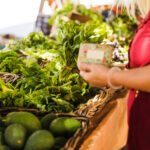Walking through a farmers’ market or health store, it’s easy to be overwhelmed by green labels, earthy fonts, and buzzwords like “natural” or “sustainable.” But not everything that looks eco-friendly actually is. So how can you tell if a product is genuinely good for the planet — and not just good at marketing?
Let’s break down how to identify truly eco-conscious products and avoid the traps of greenwashing.
What Is Greenwashing?
Greenwashing is when companies make their products appear more environmentally friendly than they really are. It might be a misleading label, vague language, or packaging designed to look natural — without actually making a meaningful environmental impact.
How to Tell If a Product Is Truly Eco-Friendly
✅ 1. Look for Clear, Certified Labels
Some terms like “natural” or “eco” aren’t regulated. Instead, look for official certifications such as:
-
USDA Organic (USA)
-
EU Organic Logo (Europe)
-
Fair Trade Certified
-
Rainforest Alliance
-
Non-GMO Project Verified
These logos mean the product has passed strict standards for sustainability, safety, and ethics.
✅ 2. Read the Ingredient List
A short, simple ingredient list is a good sign — especially if the ingredients are recognizable and plant-based. Avoid long lists full of synthetic additives, artificial fragrances, or hidden preservatives.
✅ 3. Check the Packaging
-
Is it recyclable, compostable, or refillable?
-
Is it made from recycled materials?
Eco-friendly products often avoid single-use plastics and unnecessary wrapping. Bonus points if the brand encourages packaging returns or zero-waste practices.
✅ 4. Know the Brand’s Mission
Does the company provide transparency about its practices? Do they share information about sourcing, labor, or environmental impact on their website or packaging? Authentic eco-brands are proud to share their values — and their challenges.
✅ 5. Shop Local When Possible
Products from small-scale farmers or artisans at your local market usually have a much lower environmental footprint than mass-produced alternatives — even if they don’t carry official labels. Less transport, less packaging, and more personal responsibility = greener goods.
Red Flags to Watch For
🚩 Vague claims like “eco-friendly,” “green,” or “natural” without explanation
🚩 Fake nature imagery (flowers, leaves, recycled-looking colors) without real action
🚩 Plastic overload — eco products shouldn’t come wrapped in layers of plastic
🚩 No info about sourcing or sustainability — real brands are transparent
Final Thoughts
Choosing eco-friendly products is about progress, not perfection. The more informed you are, the easier it becomes to make choices that align with your values — for your health, your community, and the planet.
Next time you’re browsing the market, don’t just follow the label — follow the truth behind it.








